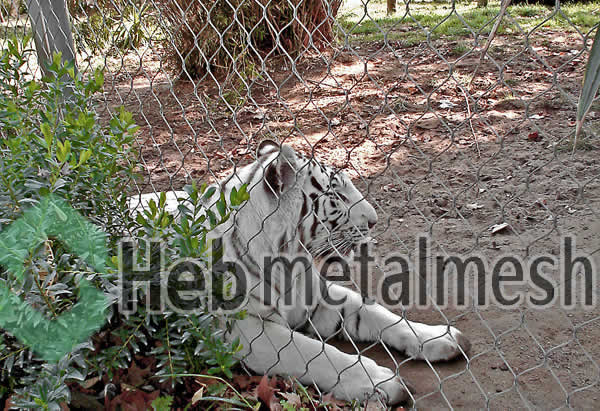Zoos are a popular attraction for people of all ages, offering a chance to see exotic animals up close. However, with the recent incidents of animals escaping from their enclosures, safety has become a top priority for zoo owners and visitors alike. One area of concern is the safety of tiger cages, as these powerful animals require strong and secure enclosures. In this article, we will discuss the importance of safety netting for zoo tiger cages and how it can help protect both the animals and the visitors.
The Importance of Safety Netting

Tigers are known for their strength and agility, making them capable of jumping and climbing to great heights. This poses a significant risk for visitors and zoo staff, as well as the tigers themselves. Safety netting provides a physical barrier that prevents tigers from escaping their enclosures and causing harm to themselves or others. It also serves as a visual barrier, reducing stress and aggression in the animals by limiting their view of the outside world.
Types of Safety Netting
There are various types of safety netting available for zoo tiger cages, each with its own unique features and benefits. The most common types include:
Knotted Netting
Knotted netting is made from high-strength polyethylene and is known for its durability and strength. It is resistant to UV rays and harsh weather conditions, making it suitable for outdoor use. Knotted netting is also available in different mesh sizes, allowing zoo owners to choose the best option for their specific enclosure needs.
Knotless Netting
Knotless netting is made from a single strand of polyethylene, resulting in a smoother and more uniform appearance. It is also resistant to UV rays and weather conditions, making it a suitable option for outdoor use. Knotless netting is often used for smaller enclosures or as a secondary barrier within larger enclosures.
Hybrid Netting
Hybrid netting combines the strength of knotted netting with the smooth appearance of knotless netting. It is made from a combination of polyethylene and stainless steel, providing superior strength and durability. Hybrid netting is often used for larger enclosures or areas with high tension requirements.
Benefits of Safety Netting
Aside from providing a physical and visual barrier, safety netting offers several other benefits for zoo tiger cages. These include:
- Protection for visitors and zoo staff: Safety netting prevents tigers from escaping their enclosures and causing harm to visitors and zoo staff.
- Protection for the animals: Safety netting also protects the tigers from potential harm, such as attacks from other animals or injuries from escaping their enclosures.
- Customizable: Safety netting can be customized to fit any size or shape of enclosure, making it a versatile option for zoo owners.
- Long-lasting: High-quality safety netting is designed to withstand harsh weather conditions and can last for many years with proper maintenance.
- Aesthetically pleasing: Safety netting is available in different colors and mesh sizes, allowing zoo owners to choose an option that blends in with the natural surroundings and enhances the overall appearance of the enclosure.
In conclusion, safety netting is an essential component of zoo tiger cages, providing protection for both the animals and the visitors. By investing in high-quality safety netting, zoo owners can ensure the safety and well-being of their tigers and create a secure and enjoyable experience for all.


